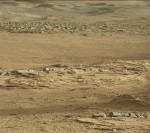The public will have the opportunity to view and learn more about the upcoming total lunar eclipse on NASA television, the agency's website and social media. Coverage begins at 11 p.m. PDT Monday, April 14, and will last approximately three hours. The eclipse's peak, when the moon will enter the Earth's full shadow or umbra, will occur at 12:45 a.m. Tuesday, April 15.
The United States will be in a prime orbital position and time of day to view the eclipse. Depending on local weather conditions, the public will get a spectacular view looking into the sky as the moon's appearance will change from bright orange to blood red to dark brown and perhaps gray. The eclipse is a phenomenon that occurs when Earth, the moon and the sun are in perfect alignment, blanketing the moon in Earth's shadow. People in the United States will not be able to witness an entire full lunar eclipse again until 2019.
NASA spacecraft in lunar orbit, including the Lunar Atmosphere and Dust Environment Explorer (LADEE) and the Lunar Reconnaissance Orbiter, must survive harsh conditions as they and the moon pass through Earth's deep shadow. Starved of sunlight for power and enduring deep cold, they will rely on batteries to see them through. Like the other missions, LADEE is expected to survive but it wasn't designed to, and this is space, so surprises can occur.
Leading up to the eclipse, NASA will host a Reddit Ask Me Anything (AMA) at 11 a.m. April 14, with astronomers from the agency's Marshall Space Flight Center in Huntsville, Ala. Various NASA researchers also will be available for media interviews. NASA Twitter, Google+, Facebook and Instagram followers will be able to join the conversation and ask questions using the hashtag #eclipse.
The public will be able to tag and share their images of the eclipsed moon on Instagram and the agency's Flickr group at:https://www.flickr.com/groups/nasalunareclipse
Lunar eclipse video resources are available at:http://svs.gsfc.nasa.gov/Gallery/2014TotalLunarEclipse.html
Live NASA TV coverage and commentary will begin at 10 p.m. April 14. To view the coverage and access eclipse streaming video, visit:http://www.nasa.gov/nasatv
For more information on NASA's eclipse activities, visit:http://go.nasa.gov/1kkfFXX
For more information about the LADEE mission, visit:http://www.nasa.gov/ladee
Excerpt from:
NASA to Provide Live Coverage and Commentary of April 14-15 Lunar Eclipse

